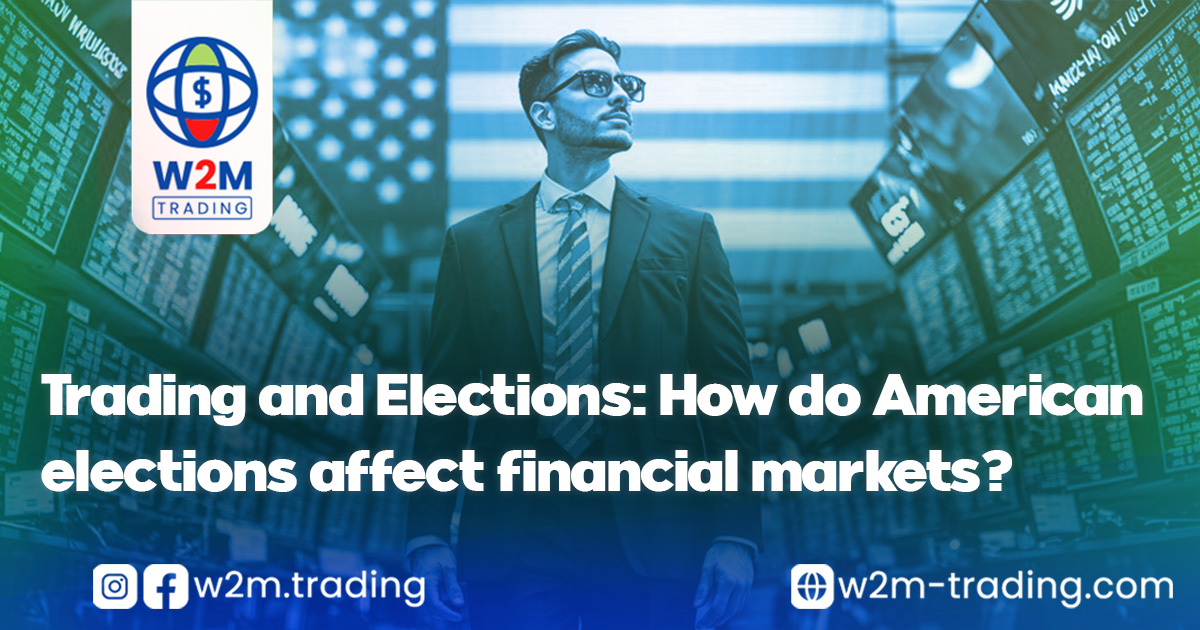- Attractive Education
- Beginner to Advance
- Flexible Timing

In the world of trading, traders face many factors that influence market trends. Among these factors, U.S. elections are a major event that can have a significant impact on market movements, including stock, currency, and commodity markets. The political fluctuations associated with elections can cause strong market volatility, creating opportunities or risks for traders. In this article, we will discuss how U.S. elections affect financial markets and how traders can capitalize on these periods to maximize their opportunities.
U.S. Elections and Their Impact on Financial Markets
U.S. elections are among the most influential events in global financial markets. Whether it’s the presidential or congressional elections, political changes can trigger unexpected market movements. But why do U.S. elections have such a significant impact?
Economic and Political Impact
Elections often involve changes in fiscal and economic policies that can create uncertainty in the markets. In certain cases, the victory of a particular candidate may lead to changes in tax laws, government spending, or even international trade policies. For example, an economic program might offer advantages to investors in the tech or industrial sectors, while another may oppose increasing taxes on large corporations.
These expectations significantly affect market prices, whether in stock markets or in commodities and currency markets. Experienced traders are well aware that elections bring volatility to the markets, with stocks particularly influenced by news about the candidates and the policies they propose.
Price Volatility During Elections
During election periods, markets can experience an increase in volatility. Traders watch the election results closely and monitor any signs that might indicate potential outcomes and their impact on the economy. For instance, if a candidate who favors a tough trade policy wins, U.S. stock markets may decline due to fears of trade wars or higher corporate taxes. Conversely, markets might surge if a candidate promises economic stimulus policies.
How Results Affect the Markets
Traders in currency markets often focus on how elections will impact the U.S. dollar. The dollar is greatly influenced by the economic policies proposed by the candidates, as policies related to taxes, fiscal stimulus, or even monetary policy can lead to fluctuations in the value of the dollar. In times of uncertainty, the dollar might experience volatility, creating opportunities for traders in the forex markets.
Trading Strategies During U.S. Elections
The election period offers many opportunities for investors and traders, but they must approach this time cautiously. Due to the significant volatility markets may experience, it is important to implement well-thought-out strategies to mitigate risks and enhance opportunities. Here are some strategies traders can follow during elections:
Traders can rely on technical analysis to understand prevailing market trends during elections. By tracking charts, they can identify support and resistance levels, as well as price patterns that may indicate periods of high volatility. Technical analysis helps traders determine appropriate entry and exit points based on current price movements, rather than relying on political predictions or news.
During elections, markets tend to experience increased volatility due to political and economic fluctuations. Traders can exploit this volatility through strategies that focus on price fluctuations, such as short-term trading (scalping) or news trading. Through these strategies, traders can benefit from rapid market movements triggered by political announcements or election results.
During elections, markets are heavily influenced by news about candidates and their political agendas. Traders can build strategies based on news by staying updated on election-related events and forecasts. Sometimes, news related to the election may have a bigger impact than the actual results, so it’s essential to stay informed about breaking news.
Traders can also use options and futures as tools to hedge their portfolios against market volatility during elections. For example, traders can buy options to buy or sell certain stocks or commodities based on their election result predictions. These tools give traders greater flexibility in managing volatility and protecting their investments.
Should You Avoid Trading During Elections?
Although U.S. elections present significant opportunities for trading, this does not mean that everyone should engage in trading during this period. If you are a beginner trader or cannot tolerate the significant risks that may arise during these times, it might be better to avoid trading during elections or at least reduce the level of risk you take.
In conclusion, U.S. elections can be an unstable time for the markets, meaning that large movements may happen quickly, exposing traders to significant risks if they lack experience. However, for experienced traders, elections can be an opportunity to make substantial profits by taking advantage of these fast-paced movements.
U.S. elections are not just a political event but a major opportunity for traders to capitalize on changes in financial markets. Although these periods may be risky, there are effective strategies that can be employed for success. By understanding the impact of elections on markets and developing precise trading strategies, traders can achieve significant profits during these times.
If you’re a trader looking to take advantage of market fluctuations during U.S. elections, it’s important to follow disciplined methods and stay updated on everything happening in the political landscape. Trading during elections requires flexibility and caution, but if done right, it can have a positive impact on your investment portfolio.
Don’t miss out on a significant investment opportunity—stay informed about the latest political and economic events!
To learn more about trading strategies during U.S. elections and how to respond to market volatility, you can watch the video here
You can also follow all about trading through the “Teaching Trading for Beginners” series on the YouTube channel via here
This site is protected by reCAPTCHA and the Google
Privacy Policy and
Terms of Service apply.